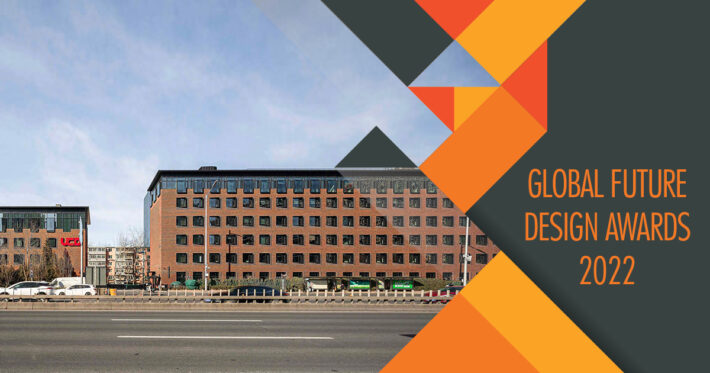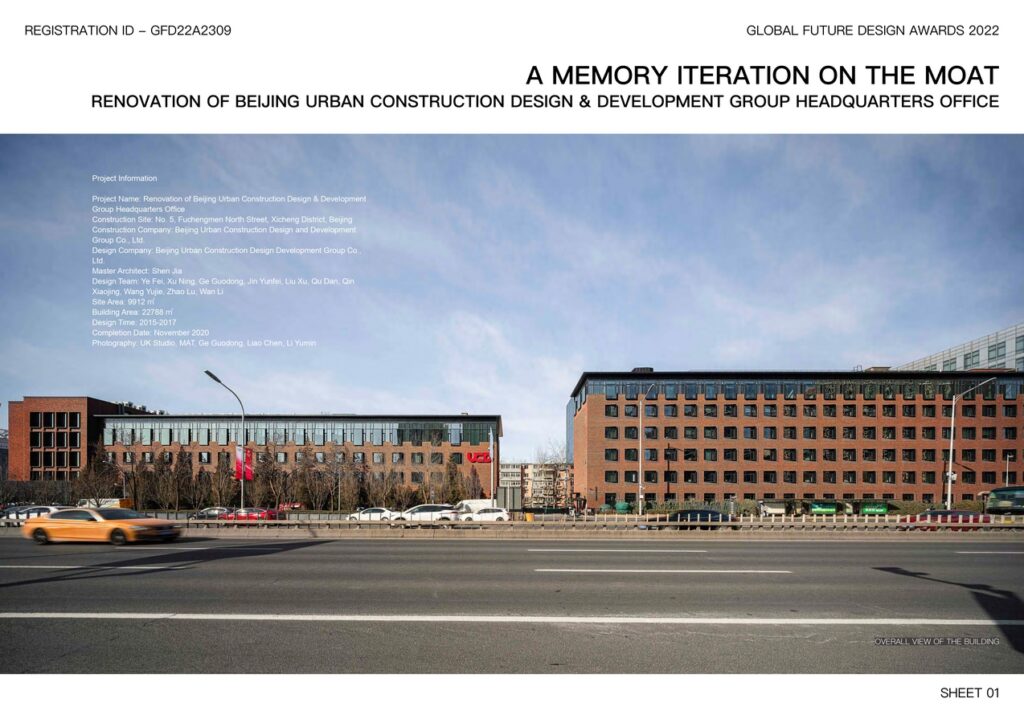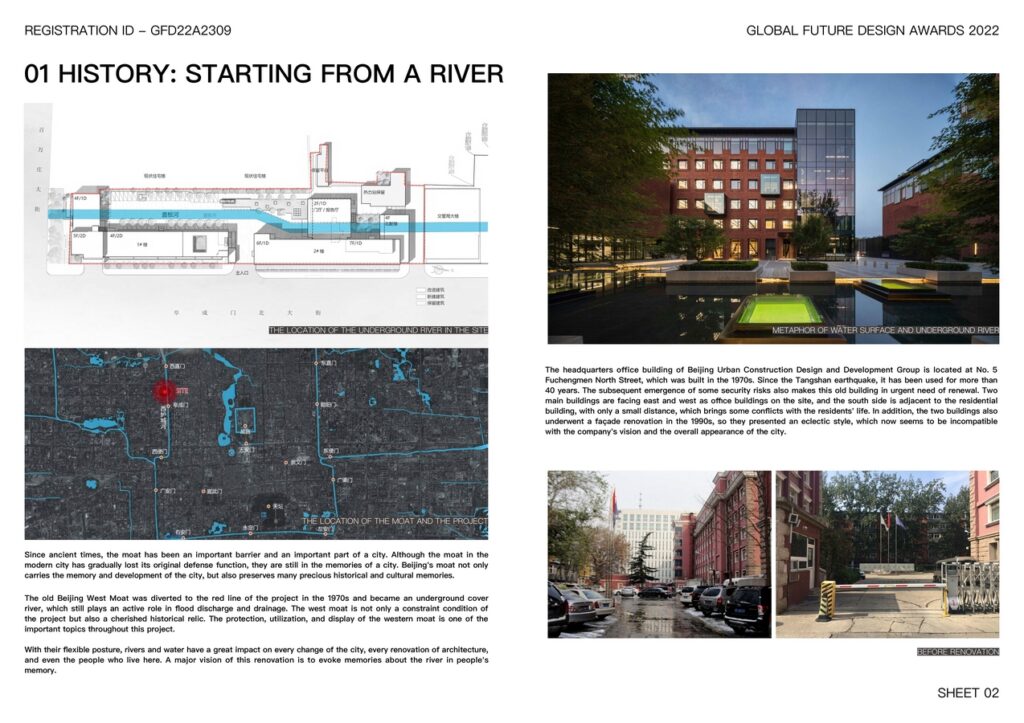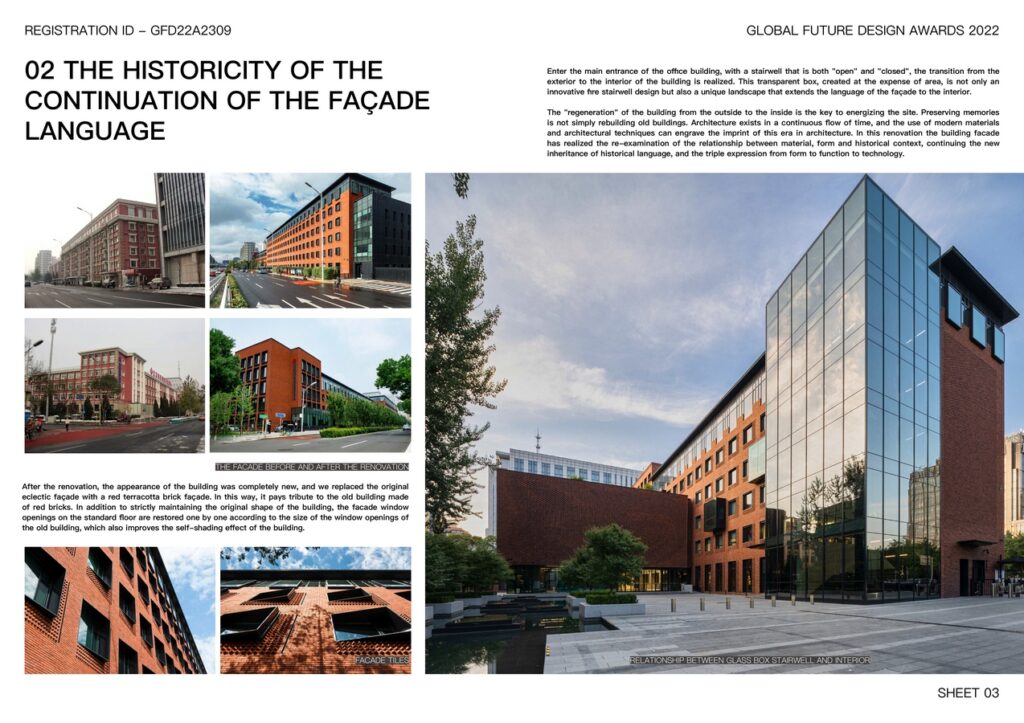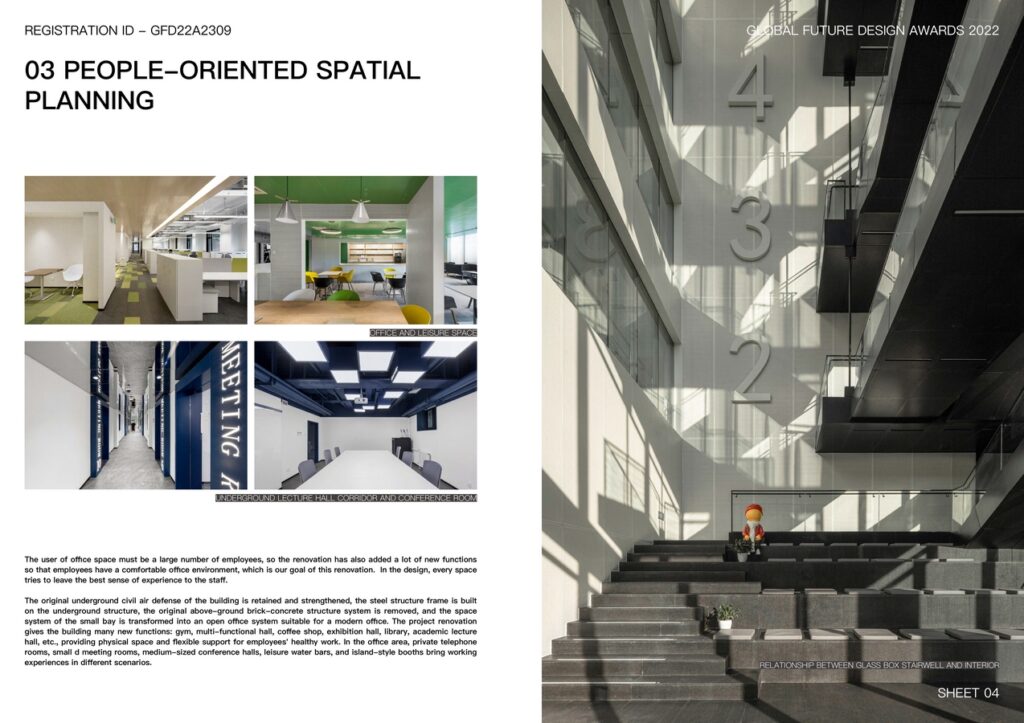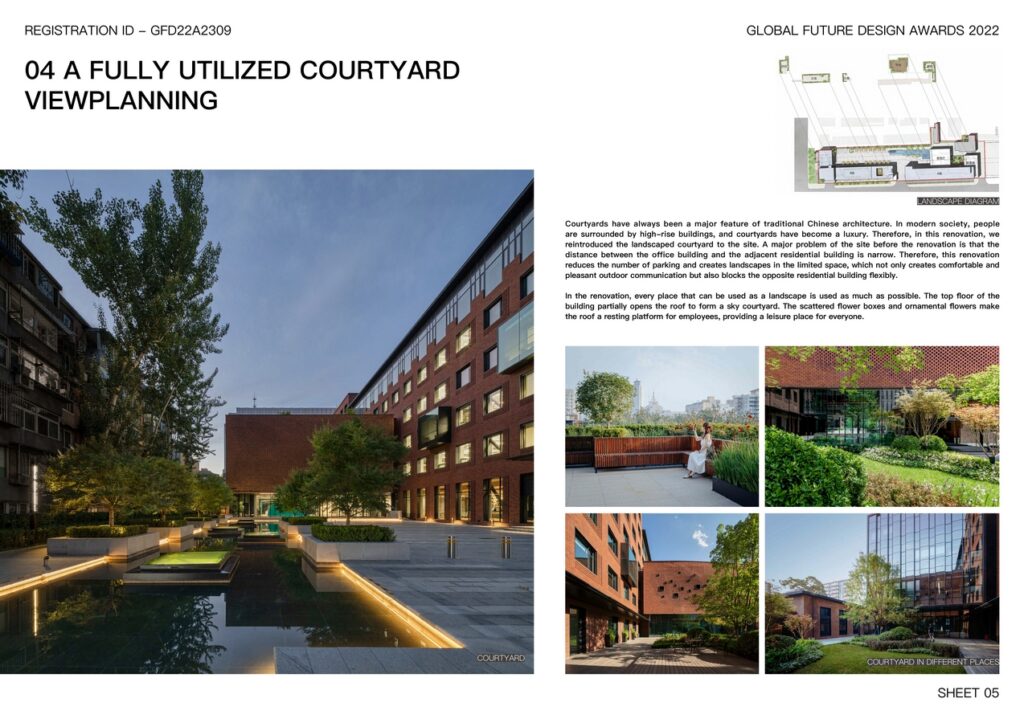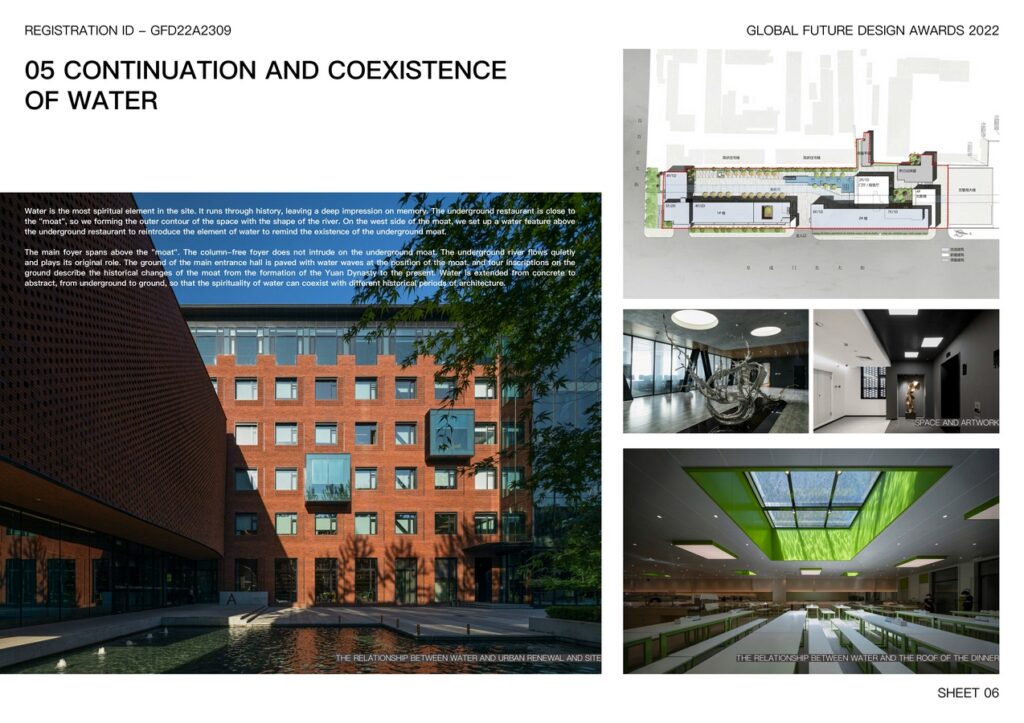Since ancient times, the moat has been an important barrier and an important part of a city. Although the moat in the modern city has gradually lost its original defense function, they are still in the memories of a city. Beijing’s moat not only carries the memory and development of the city, but also preserves many precious historical and cultural memories. The old Beijing West Moat was diverted to the red line of the project in the 1970s and became an underground cover river, which still plays an active role in flood discharge and drainage. The west moat is not only a constraint condition of the project but also a cherished historical relic. The protection, utilization, and display of the western moat is one of the important topics throughout this project.
With their flexible posture, rivers and water have a great impact on every change of the city, every renovation of architecture, and even the people who live here. A major vision of this renovation is to evoke memories about the river in people’s memory.
Global Future Design Awards 2023: Entries Open!
Gold 🏆 Winner
Global Future Design Awards 2022
Beijing Urban Construction Design & Development Group Headquarters Office Building
Architecture Technology Built
Firm
Beijing Urban Construction Design & Development Group Co., Limited
Architect/Designer
Shen Jia
Design Team
Ye Fei, Xu Ning, Ge Guodong, Jin Yunfei, Liu Xu, Qu Dan, Qin Xiaojing, Wang Yujie, Zhao Lu, Wan Li
Location
No. 5 Courtyard, Fuchengmen Street, Xicheng District, Beijing
Country
China
Photographer/Copyright
©UK Studio, MAT, Ge Guodong, Liao Chen, Li Yumin
The headquarters office building of Beijing Urban Construction Design and Development Group is located at No. 5 Fuchengmen North Street, which was built in the 1970s. Since the Tangshan earthquake, it has been used for more than 40 years. The subsequent emergence of some security risks also makes this old building in urgent need of renewal. Two main buildings are facing east and west as office buildings on the site, and the south side is adjacent to the residential building, with only a small distance, which brings some conflicts with the residents’ life. In addition, the two buildings also underwent a façade renovation in the 1990s, so they presented an eclectic style, which now seems to be incompatible with the company’s vision and the overall appearance of the city.
After the renovation, the appearance of the building was completely new, and we replaced the original eclectic façade with a red terracotta brick façade. In this way, it pays tribute to the old building made of red bricks. In addition to strictly maintaining the original shape of the building, the facade window openings on the standard floor are restored one by one according to the size of the window openings of the old building, which also improves the self-shading effect of the building.
Enter the main entrance of the office building, with a stairwell that is both “open” and “closed”, the transition from the exterior to the interior of the building is realized. This transparent box, created at the expense of area, is not only an innovative fire stairwell design but also a unique landscape that extends the language of the façade to the interior. The “regeneration” of the building from the outside to the inside is the key to energizing the site. Preserving memories is not simply rebuilding old buildings. Architecture exists in a continuous flow of time, and the use of modern materials and architectural techniques can engrave the imprint of this era in architecture. In this renovation the building facade has realized the re-examination of the relationship between material, form and historical context, continuing the new inheritance of historical language, and the triple expression from form to function to technology.


